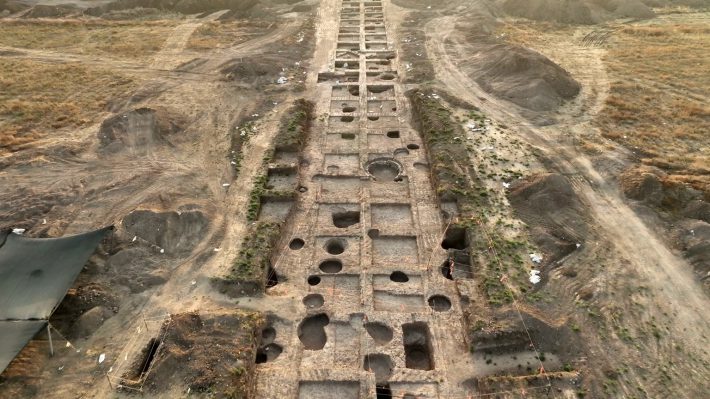Archaeologists uncover Israel’s first southern Canaanite flint blade workshop, exposing stunning Early Bronze Age industrial innovation and societal complexity.
A Prehistoric Powerhouse Unearthed: 5,500-Year-Old Canaanite Blade Factory Discovered in Southern Israel
In an archaeological revelation set to reshape the understanding of ancient technological sophistication, a 5,500-year-old flint blade workshop—the first of its kind in southern Israel—has been unearthed near Kiryat Gat.
This exceptional find, discovered during a major salvage excavation at the Naḥal Qomem site (Gat-Govrin, Zeita), was led by the Israel Antiquities Authority (IAA) and funded by the Israel Lands Authority ahead of constructing the new Carmei Gat neighborhood. This summer, the remarkable artifacts will be displayed publicly for the first time at the Jay and Jeanie Schottenstein National Campus for the Archaeology of Israel in Jerusalem.
🛠️ The Discovery: Ancient Innovation Ahead of Its Time
Archaeologists uncovered long, razor-sharp flint blades—some still attached to rare, intact stone cores, the parent rocks from which they were expertly carved. These weren’t random stone shards; they were part of a highly sophisticated Early Bronze Age blade production center, previously unknown in southern Israel.
“This is the first known flint blade workshop in the region,” said excavation directors Dr. Martin David Pasternak, Shira Lifshitz, and Dr. Nathan Ben-Ari. “Its discovery signals an organized society with professional specialization and a thriving economic network—already taking shape over 5,000 years ago.”
Dr. Jacob Vardi and Dudu Biton, leading IAA prehistorians, added:
“Only a select group of expert craftsmen had the skill to produce these flawless blades. The level of precision is staggering and shows the existence of a skilled, secretive guild-like culture, likely protecting their techniques.”
🌍 A Lost Industrial Hub
Excavation revealed that the site was inhabited for centuries, from the Chalcolithic through the Early Bronze Age, and was much larger than previously believed—spanning over half a kilometer. Hundreds of underground pits were discovered—some lined with mud bricks—used for storage, housing, craft production, and possibly religious or communal rituals.
The flint cores found were used to create uniform, high-quality cutting tools used for harvesting, butchering, and daily work—tools known today as Canaanite blades.
“This was a cutting-edge industry, literally and figuratively,” noted Dr. Vardi. “Even more fascinating is what we didn’t find: very little production waste, suggesting craftsmen intentionally removed debris to protect their trade secrets and possibly monopolize the distribution of tools across the Levant.”
📍 Why It Matters:
- First workshop of its kind in southern Israel
- Reveals early urbanization and economic stratification
- Highlights advanced tool-making technology in 3500 BCE
- Offers new insight into Canaanite culture and trade routes
- Provides a rare look into prehistoric professional specialization
📅 See It Firsthand:
These rare and pivotal artifacts will be presented to the public this summer at the Jay and Jeanie Schottenstein National Campus for the Archaeology of Israel in Jerusalem. For tour dates and details, visit the Israel Antiquities Authority website.





